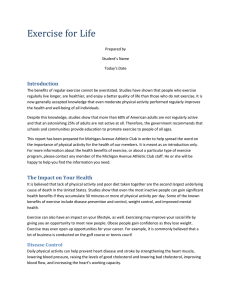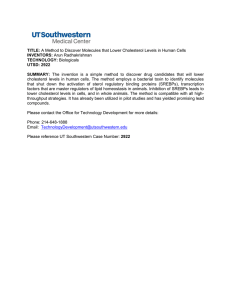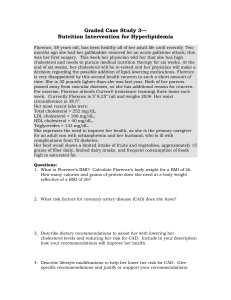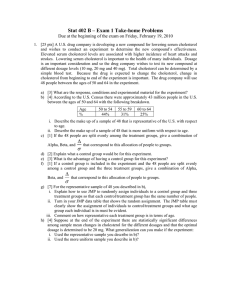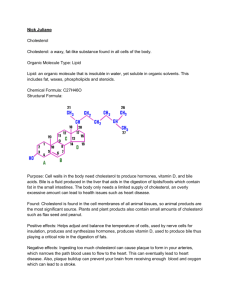Exercise to Lower Your Risk of a Heart Attack
advertisement
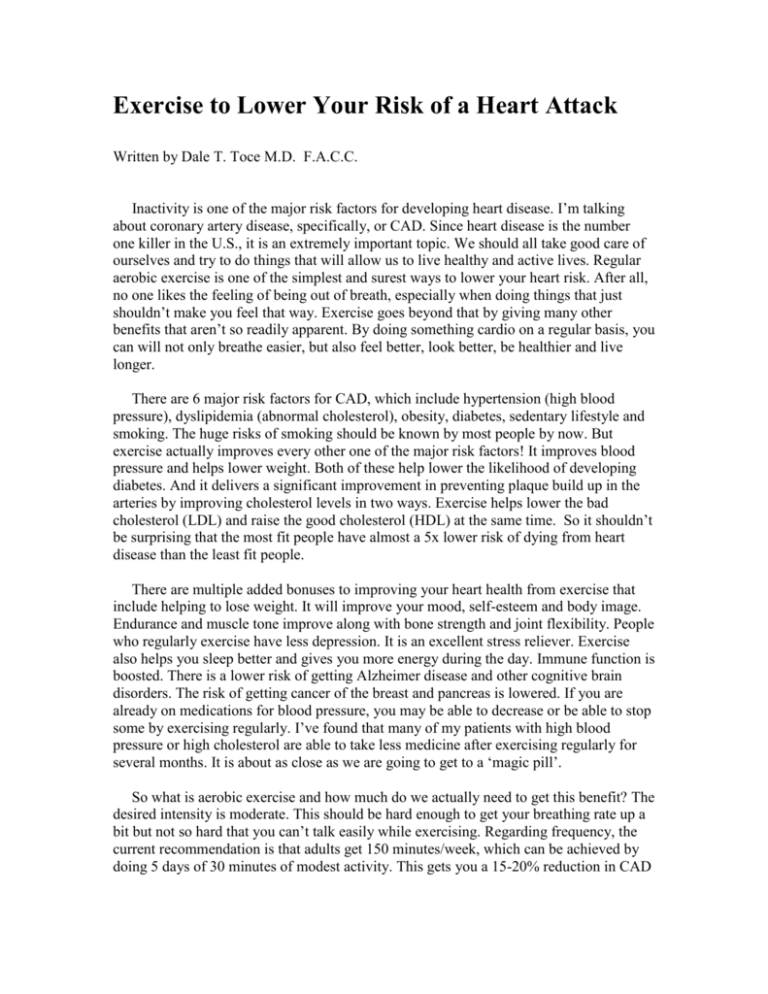
Exercise to Lower Your Risk of a Heart Attack Written by Dale T. Toce M.D. F.A.C.C. Inactivity is one of the major risk factors for developing heart disease. I’m talking about coronary artery disease, specifically, or CAD. Since heart disease is the number one killer in the U.S., it is an extremely important topic. We should all take good care of ourselves and try to do things that will allow us to live healthy and active lives. Regular aerobic exercise is one of the simplest and surest ways to lower your heart risk. After all, no one likes the feeling of being out of breath, especially when doing things that just shouldn’t make you feel that way. Exercise goes beyond that by giving many other benefits that aren’t so readily apparent. By doing something cardio on a regular basis, you can will not only breathe easier, but also feel better, look better, be healthier and live longer. There are 6 major risk factors for CAD, which include hypertension (high blood pressure), dyslipidemia (abnormal cholesterol), obesity, diabetes, sedentary lifestyle and smoking. The huge risks of smoking should be known by most people by now. But exercise actually improves every other one of the major risk factors! It improves blood pressure and helps lower weight. Both of these help lower the likelihood of developing diabetes. And it delivers a significant improvement in preventing plaque build up in the arteries by improving cholesterol levels in two ways. Exercise helps lower the bad cholesterol (LDL) and raise the good cholesterol (HDL) at the same time. So it shouldn’t be surprising that the most fit people have almost a 5x lower risk of dying from heart disease than the least fit people. There are multiple added bonuses to improving your heart health from exercise that include helping to lose weight. It will improve your mood, self-esteem and body image. Endurance and muscle tone improve along with bone strength and joint flexibility. People who regularly exercise have less depression. It is an excellent stress reliever. Exercise also helps you sleep better and gives you more energy during the day. Immune function is boosted. There is a lower risk of getting Alzheimer disease and other cognitive brain disorders. The risk of getting cancer of the breast and pancreas is lowered. If you are already on medications for blood pressure, you may be able to decrease or be able to stop some by exercising regularly. I’ve found that many of my patients with high blood pressure or high cholesterol are able to take less medicine after exercising regularly for several months. It is about as close as we are going to get to a ‘magic pill’. So what is aerobic exercise and how much do we actually need to get this benefit? The desired intensity is moderate. This should be hard enough to get your breathing rate up a bit but not so hard that you can’t talk easily while exercising. Regarding frequency, the current recommendation is that adults get 150 minutes/week, which can be achieved by doing 5 days of 30 minutes of modest activity. This gets you a 15-20% reduction in CAD risk, which is not too bad. Walk a bit on most days and you get to live longer and healthier. It’s pretty simple, but it isn’t necessarily easy. We all live busy lives. Many people have work or family obligations that limit their free time. Don’t you think you’re worth it? Be an example for your family and friends. Show that you care enough about yourself to take good care of yourself. Then make a plan and stick to it. It takes a period of several weeks of forcing yourself to do it before it becomes a habit. Hopefully it is important enough to you to do it. Of course, if you have multiple risk factors for heart disease, you may want to discuss with your physician how best to engage in an exercise regimen. If you ever develop warning symptoms that could be from CAD, like chest discomfort (pain or pressure) when doing usual activities, feeling faint or becoming much more short of breath with even minimal activity, then see your doctor for an evaluation. You may need more specific testing to evaluate your heart related risk, like an exercise stress test or an echocardiogram to evaluate the overall heart function and heart valves. So get out and get going. Swim, bike, run or do all of them together in a triathlon. Do cross-fit or P-90X and add in some Tai-Chi or yoga. Get on an elliptical machine and get your heart rate up. Use a rowing machine. Join a local gym or walk the neighborhood. Sign up for a 5K race-especially if it is a charity race. See the world around you and enjoy the beautiful weather we have here in New England. And remember, it’s a proven law of physics, a body in motion stays in motion. So get active and get healthy!

